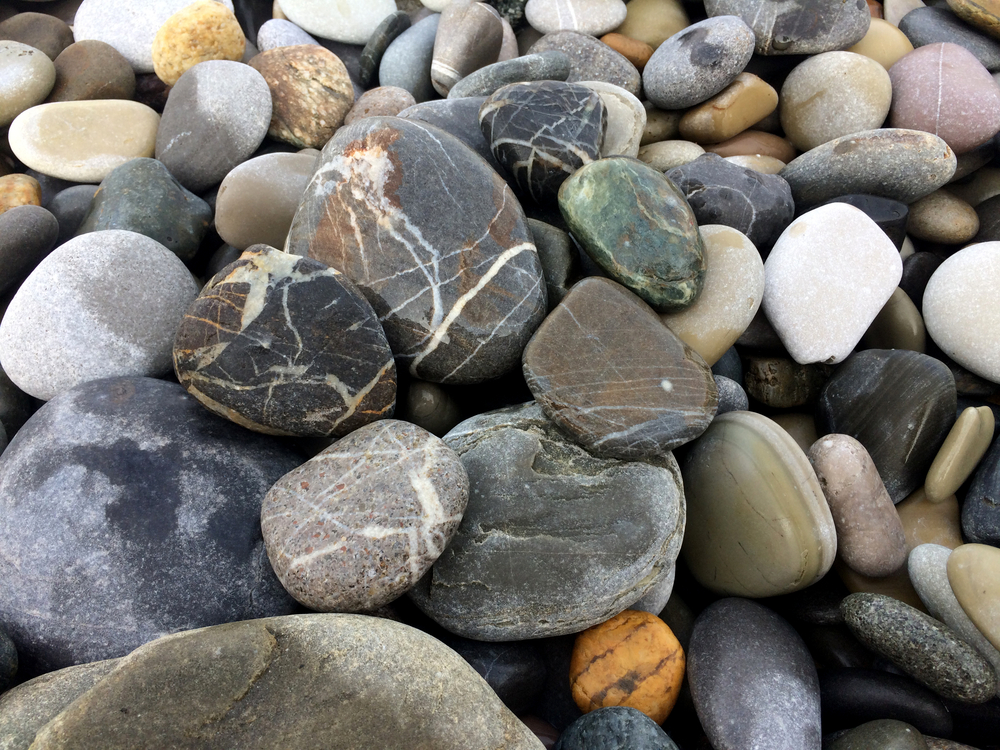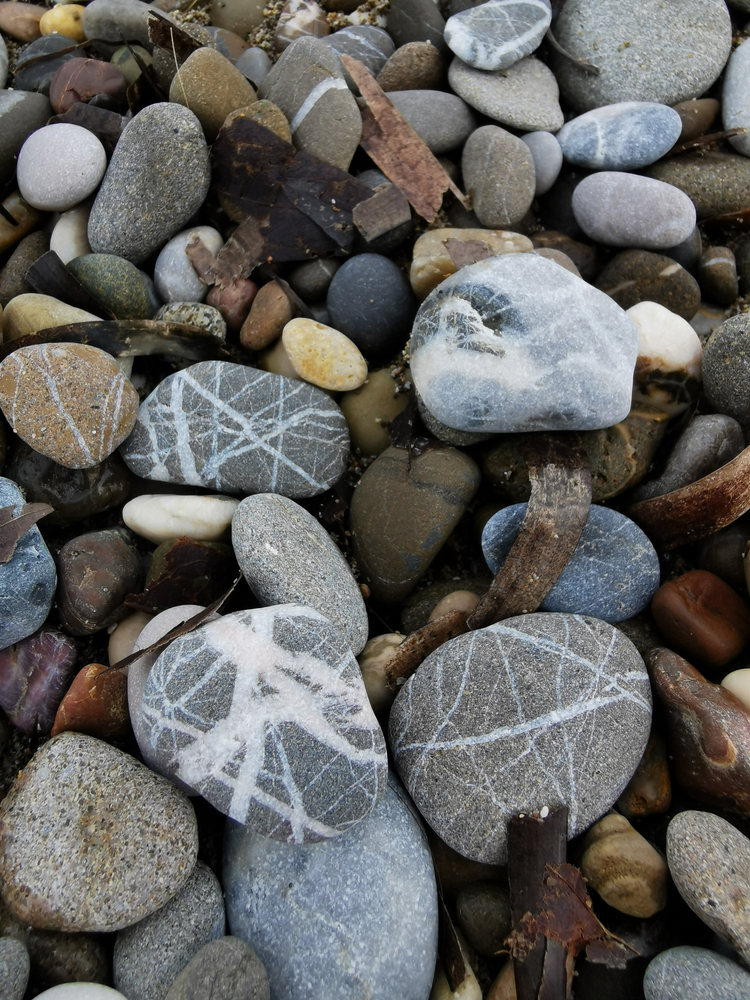While sometimes considered nondescript, wishing stones are a favorite find for rockhounds who are into the lore behind them. That said, many don’t know what they are or the legend behind them, which means they’re often left behind. It’s a shame since it’s an interesting topic even if you don’t hold to the superstition behind them.
So let’s take a look into what wishing stones are, the lore behind them, and where you can take a look to find a few of your own.
What Are Wishing Stones?
Simply put, wishing stones are stones that have an unbroken line of quartz, chalcedony, or calcite running around the entire exterior of the stone. The type of stone doesn’t matter much, instead, it’s the ring around the outside that defines them.
As a general rule, the stone should also be smooth. A piece of roughly broken jasper with a line of chalcedony wouldn’t qualify to most people, although the exact definition varies. The stone should also have only one unbroken line, although having other bits of visible quartz or calcite material is acceptable to most.

They’re often found in fine-grained igneous rock like basalt, although they can be found in anything from granite to chert depending on the location you’re looking.
On occasion, the unbroken line will be primarily on one end of the stone, forming into something closer to a ring than a line. These still count according to most lore.
Think of it as something like a four-leaf clover: a fairly rare occurrence that has had special meaning attributed to it over the years.
How Do Wishing Stones Form?
Due to the loose definition of wishing stones, it’s hard to say for certain how each one was formed.
As a general rule, however, the material which makes the ring around the stone is generally the result of extreme pressure breaking the rock down in the past. This creates a crack that is then in-filled with another mineral as subterranean water brings silica or calcite into the equation.

Many wishing stones form in metamorphic rocks as well. Quartzite, for instance, is made up of a relatively pure sandstone that’s been buried under sediment until the heat and pressure cause the grains to fuse together. This process can also cause cracks, and as the stone rises to the surface due to tectonic action these fractures are often filled with other minerals.
Erosion is a necessary part of the creation of a wishing stone. As the bedrock weathers when brought to the surface once more by tectonic action, pieces of the cemented stone will weather out. These cracked pieces often end up in the sea or in rivers, where water and the sand it carries smooth them out over a few hundred years.
Essentially, wishing stones are generally part of small veins of calcite or silica material that have undergone erosion and weathering processes in a lucky manner. While not scarce, these stones also aren’t the most common formation around either.
The Legend Behind Wishing Stones
Wishing stones have a variety of different legends behind them. The actual legend’s source seems to be shrouded in mystery. It’s best to consider it as a nondescript little bit of folklore repeated by those who live near rocky shores in places like New England, the UK, and Ireland. Some say that the legend can be traced back to Celtic folklore but there’s no solid proof of that.
The most common variation of the legend is that the stones grant wishes when you trace the line around them and say your wish out loud before throwing the rock back into the sea or river from whence it came. Others say that you should bury the stone after finding it, particularly if it comes from a body of freshwater.
This form of the legend often comes with the caveat that making the wish for another person is sure to make all of your wishes come true as well.
This form of the legend is the most commonly seen. While details vary a bit on the ritual and way to make your wish, the common thread is that it must qualify as a wishing stone and that it needs to be returned to nature. In some ways, the stone isn’t really yours if you believe the legend.
Another variation holds that you should keep the stone in your pocket and your wishes will come true. In this case, the stone would seem to function as more of a good luck charm, rather than granting a specific wish.
In other cases, the stone is supposed to be placed in a special area and meditated upon while thinking about your wish.
While I don’t hold to superstitions much, I find the main variant of the legend to be my favorite. I find them on occasion, make a wish, and return them to the body of water from whence they came. I can’t say whether it works or not, but there’s no harm in trying.
Where Can Wishing Stones Be Found?

Wishing stones can be found in many places, and it depends on your exact definition of them. As noted above, some people hold that they must be smooth stones with an unbroken ring.
In this case, the best places to search are rocky beaches and alongside creeks and rivers. They show up often in these places, and the action of the water has rendered them smooth in most cases.
I’ve stumbled across them in most of the areas I’ve hunted for stones in over the years. Quartz and calcite are both incredibly common minerals. Since they can come in so many different colors and shapes it’s just a matter of training your eyes to see the white line across the stone.
Others believe that even rough stones can hold them, in which case you can also find them alongside road cuts and anywhere that stone is weathering and releasing chunks. Each bit of a mineral vein that weathers out of the bedrock has a chance of being one.
Essentially: they tend to show up anywhere stones are found. They’re fun to keep an eye out for, and you can always store them for later when you might need a little bit of extra luck!
- Online rock and mineral club for collectors of all levels!
- Find community with like-minded rock and mineral enthusiasts.
- Monthly Giveaways!
- Free Access to Entire Digital Library of Products (annual memberships)


